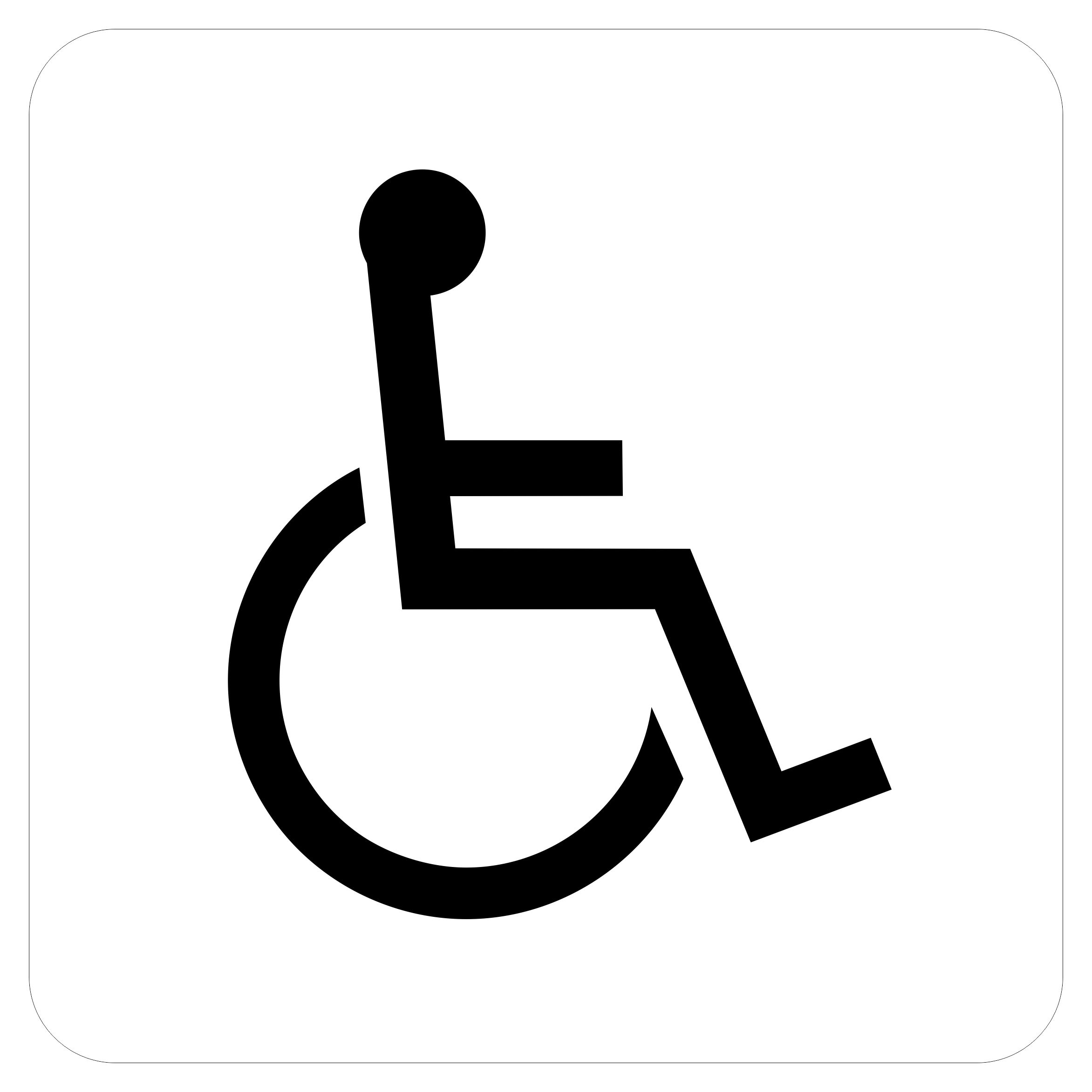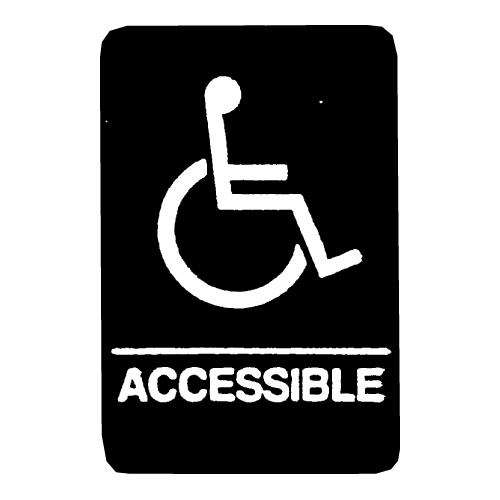Exploring the Secret Attributes of ADA Signs for Boosted Access
In the realm of accessibility, ADA indications offer as silent yet effective allies, making certain that rooms are comprehensive and navigable for people with handicaps. By incorporating Braille and tactile aspects, these indications break obstacles for the aesthetically impaired, while high-contrast color systems and clear fonts provide to diverse visual requirements.
Significance of ADA Compliance
Making sure conformity with the Americans with Disabilities Act (ADA) is critical for cultivating inclusivity and equal accessibility in public areas and work environments. The ADA, established in 1990, mandates that all public centers, companies, and transport solutions accommodate people with impairments, guaranteeing they appreciate the same legal rights and chances as others. Compliance with ADA standards not only fulfills lawful responsibilities yet additionally boosts a company's online reputation by demonstrating its dedication to variety and inclusivity.
Among the key elements of ADA compliance is the application of obtainable signs. ADA signs are created to make certain that people with impairments can conveniently browse via rooms and buildings. These signs should follow specific standards relating to size, font, shade comparison, and placement to assure presence and readability for all. Correctly executed ADA signs aids remove obstacles that people with handicaps commonly come across, thereby advertising their self-reliance and confidence (ADA Signs).
Additionally, adhering to ADA laws can reduce the threat of legal repercussions and prospective fines. Organizations that fall short to comply with ADA standards might face claims or penalties, which can be both economically burdensome and harmful to their public picture. Thus, ADA conformity is integral to cultivating an equitable environment for everybody.
Braille and Tactile Components
The incorporation of Braille and tactile elements right into ADA signage personifies the concepts of availability and inclusivity. It is generally put underneath the matching message on signs to ensure that individuals can access the information without aesthetic aid.
Tactile aspects expand beyond Braille and consist of elevated personalities and icons. These parts are made to be discernible by touch, enabling individuals to recognize space numbers, restrooms, exits, and other essential areas. The ADA establishes certain standards pertaining to the dimension, spacing, and placement of these responsive components to enhance readability and ensure consistency across various settings.

High-Contrast Color Pattern
High-contrast color pattern play a critical function in enhancing the exposure and readability of ADA signs for individuals with aesthetic disabilities. These schemes are crucial as they optimize the difference in light reflectance in between text and history, ensuring that indicators are conveniently discernible, also from a range. The Americans with Disabilities Act (ADA) mandates using particular shade contrasts to suit those with minimal vision, making it an essential element of compliance.
The effectiveness of high-contrast shades depends on their ability to attract attention in different lighting conditions, including dimly lit settings and areas with glare. Typically, dark text on a light history or light message on a dark history is utilized to accomplish ideal comparison. For example, black message on a white or yellow background gives a plain aesthetic difference that assists in fast acknowledgment and understanding.

Legible Fonts and Text Dimension
When considering the design of ADA signs, the choice of understandable fonts and ideal text dimension can not be overstated. These aspects are essential for making certain that indicators come to individuals with visual disabilities. The Americans with Disabilities Act (ADA) mandates that typefaces need to be not italic and sans-serif, oblique, manuscript, very decorative, or of unusual kind. These needs aid ensure that the text is easily legible from a distance and that the characters are distinct to varied audiences.
The size of the message also plays a critical duty in availability. According to ADA standards, the minimum text elevation ought to be 5/8 inch, and it needs to raise proportionally with checking out range. This is specifically crucial in public spaces where signage needs to be read quickly and precisely. Consistency in text size adds to a natural visual experience, assisting individuals in navigating environments effectively.
Additionally, spacing between letters and lines is important to legibility. Sufficient spacing prevents personalities from appearing crowded, enhancing readability. By adhering to these standards, designers can significantly enhance availability, ensuring that signage offers its designated function for all people, no matter their visual capabilities.
Reliable Positioning Approaches
Strategic positioning of ADA Visit This Link signage is important Check This Out for making best use of ease of access and making sure compliance with legal standards. Effectively located signs guide people with disabilities efficiently, promoting navigating in public spaces. Trick considerations consist of closeness, presence, and elevation. ADA standards stipulate that indicators must be mounted at a height between 48 to 60 inches from the ground to ensure they are within the line of view for both standing and seated people. This conventional elevation variety is critical for inclusivity, enabling wheelchair users and people of varying heights to gain access to info effortlessly.
Additionally, indications have to be positioned nearby to the latch side of doors to permit easy identification before entry. Consistency in sign placement throughout a facility improves predictability, lowering confusion and enhancing overall individual experience.

Conclusion
ADA signs play a vital function in promoting availability by incorporating functions that address the demands of people with disabilities. These aspects jointly promote an inclusive environment, emphasizing the significance of ADA compliance in making sure equivalent access for all.
In the realm of accessibility, ADA indications serve as quiet yet effective allies, ensuring that spaces are comprehensive and accessible for individuals with specials needs. The ADA, passed in 1990, mandates that all public facilities, companies, and transport services fit people with specials needs, ensuring they take pleasure in the exact same civil Extra resources liberties and chances as others. ADA Signs. ADA indicators are created to ensure that people with disabilities can conveniently browse through areas and buildings. ADA standards stipulate that signs need to be placed at a height in between 48 to 60 inches from the ground to ensure they are within the line of sight for both standing and seated individuals.ADA signs play an essential duty in advertising accessibility by integrating attributes that resolve the requirements of people with impairments